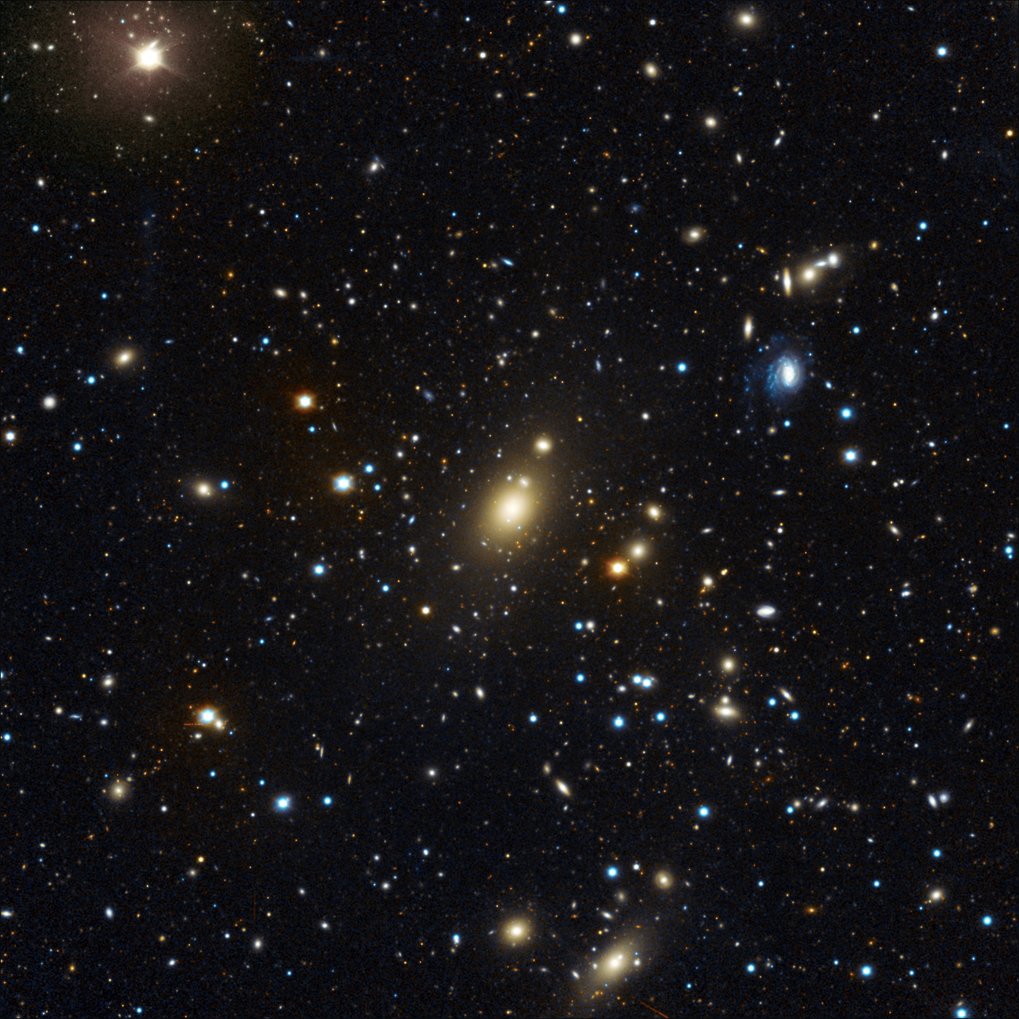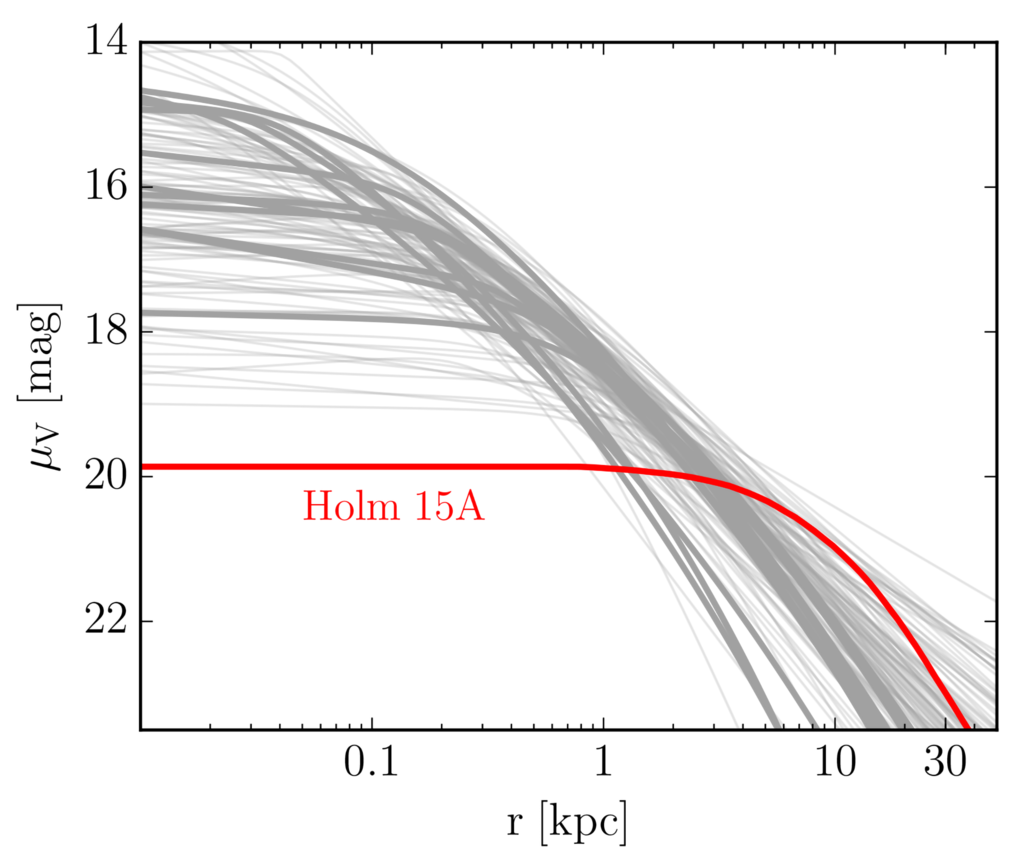Astronomers discover the heaviest black hole in the nearby universe with 40 billion solar masses

Record in the galaxy cluster: Image of Abell 85 cluster of galaxies obtained at the USM Wendelstein observatory of the Ludwig-Maximilians-University. The central bright galaxy Holm15A has an extended core. A team of astronomers at the Max Planck Institute for Extraterrestrial Physics and the University Observatory Munich were able to use new data to directly measure the mass of central black hole of this galaxy: it is 40 billion times more massive than our Sun.
Even though the central galaxy of the cluster Abell 85 has the enormous visible mass of about 2 trillion (10^12) solar masses in stars, the centre of the galaxy is extremely diffuse and faint. This is why a joint group of astronomers at the Max Planck Institute for Extraterrestrial Physics (MPE) and the University Observatory Munich (USM) got interested in the galaxy. This central diffuse region in the galaxy is almost as large as the Large Magellanic Cloud, and this was a suspicious clue for the presence of a black hole with a very high mass.
The Abell 85 cluster of galaxies, which consists of more than 500 individual galaxies, is at a distance of 700 million lightyears from Earth, twice the distance for previous direct black hole mass measurements. “There are only a few dozen direct mass measurements of supermassive black holes, and never before has it been attempted at such a distance,” explains MPE scientist Jens Thomas, who led the study. “But we already had some idea of the size of the Black Hole in this particular galaxy, so we tried it.”
The new data obtained at the USM Wendelstein observatory of the Ludwig-Maximilians-University and with the MUSE instrument at the VLT allowed the team to perform a mass estimate based directly on the stellar motions around the core of the galaxy. With a mass of 40 billion solar masses, this is the most massive black hole known today in the local universe. “This is several times larger than expected from indirect measurements, such as the stellar mass or the velocity dispersion of the galaxy,” remarks Roberto Saglia, senior scientist MPE and lecturer at the LMU.
The light profile of the galaxy shows a centre with an extremely low and very diffuse surface brightness, much fainter than in other elliptical galaxies. “The light profile in the inner core is also very flat,” explains USM doctoral student Kianusch Mehrgan, who performed the data analysis. “This means that most of the stars in the centre must have been expelled due to interactions in previous mergers.”

Faint glow: This diagram shows the distribution of the surface brightness of the central cluster galaxy Holm 15A. Compared to other galaxies, the core of the galaxy has a very low surface brightness and extends over a diameter of about 15,000 light years.
In the commonly accepted view, the cores in such massive elliptical galaxies form via so-called “core scouring”: In a merger between two galaxies the gravitational interactions between their merging, central black holes lead to gravitational slingshots that eject stars on predominantly radial orbits from the centre of the remnant galaxy. If there is no gas left in the centre to form new stars – as in younger galaxies – this leads to a depleted core.
“The newest generation of computer simulations of galaxy mergers gave us predictions that do indeed match the observed properties rather well,” states Jens Thomas, who also provided the dynamical models. “These simulations include interactions between stars and a black hole binary, but the crucial ingredient is two elliptical galaxies that already have depleted cores. This means that the shape of the light profile and the trajectories of the stars contain valuable archaeological information about the specific circumstances of core formation in this galaxy – as well as other very massive galaxies.”
However, even with this unusual merging history, the scientists could establish a new and robust relation between the black hole mass and the galaxy’s surface brightness: With every merger the black hole gains mass and the galaxy centre loses stars. Astronomers could use this relation for black hole mass estimates in more distant galaxies, where direct measurements of the stellar motions close enough to the black hole are not possible.
HAE/HOR








